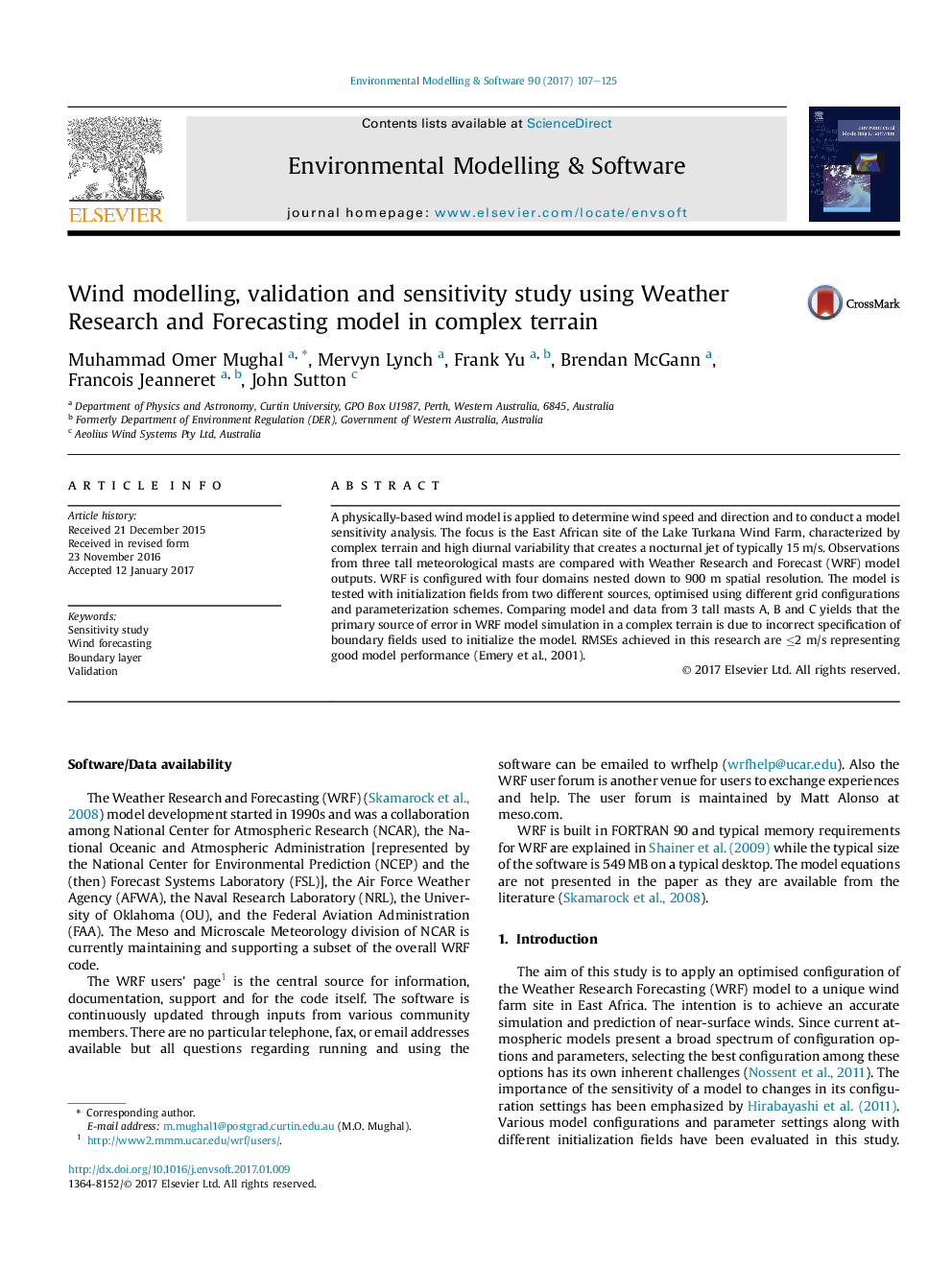| Article ID | Journal | Published Year | Pages | File Type |
|---|---|---|---|---|
| 4978221 | Environmental Modelling & Software | 2017 | 19 Pages |
Abstract
A physically-based wind model is applied to determine wind speed and direction and to conduct a model sensitivity analysis. The focus is the East African site of the Lake Turkana Wind Farm, characterized by complex terrain and high diurnal variability that creates a nocturnal jet of typically 15 m/s. Observations from three tall meteorological masts are compared with Weather Research and Forecast (WRF) model outputs. WRF is configured with four domains nested down to 900 m spatial resolution. The model is tested with initialization fields from two different sources, optimised using different grid configurations and parameterization schemes. Comparing model and data from 3 tall masts A, B and C yields that the primary source of error in WRF model simulation in a complex terrain is due to incorrect specification of boundary fields used to initialize the model. RMSEs achieved in this research are â¤2 m/s representing good model performance (Emery et al., 2001).
Related Topics
Physical Sciences and Engineering
Computer Science
Software
Authors
Muhammad Omer Mughal, Mervyn Lynch, Frank Yu, Brendan McGann, Francois Jeanneret, John Sutton,
